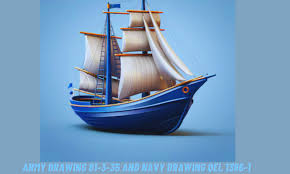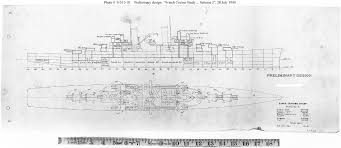Table of Contents
Introduction to Navy Drawings QEL 1386-1

The world of naval engineering is filled with intricate designs and blueprints that tell stories beyond their technical specifications. One such fascinating piece is the Navy Drawings QEL 1386-1. These drawings aren’t only a series of strains and logos; they represent many years of maritime innovation, military approach, and inventive expression. As we delve into this excellent document, put together to uncover amazing details that could change your attitude on naval structure forever. From their historical significance to hidden meanings, the Navy Drawings QEL 1386-1 offer a treasure trove of insights to explore. Let’s dive in!
History and Purpose of the Drawings
The Navy Drawings QEL 1386-1 have a rich history dating back to their inception in the mid-20th century. Initially created for naval architecture and engineering, these drawings were integral to the design of various maritime vessels. They served as blueprints that outlined specifications essential for construction.
Each drawing encapsulates precise measurements and technical details, ensuring clarity in communication among engineers and builders. The purpose was not just functionality; it aimed at enhancing safety protocols during vessel operation.
Over the years, these drawings evolved with technological advancements. Modern iterations incorporate digital tools, allowing for greater accuracy and ease of access. Their role has expanded beyond mere designs; they now serve as historical documents that reflect innovation within naval engineering.
Today, enthusiasts and historians seek out Navy Drawings QEL 1386-1 to gain insight into maritime history while appreciating the artistry involved in their creation.
The Intricate Details of the Drawings
The Navy Drawings QEL 1386-1 are a stunning showcase of technical artistry. Every line, curve, and symbol has been meticulously crafted to convey complex information.
The precision in the scale used throughout the drawings is evident. Dimensions are not arbitrary; they reflect exact specifications crucial for naval engineering.
Symbols embedded within the illustrations tell their own stories. Each represents a function or component, revealing layers of meaning that might go unnoticed at first glance.
Color coding plays an essential role as well. Different hues indicate various materials and purposes, making it easier for engineers to interpret designs quickly.
The attention to detail extends beyond mere aesthetics. The functionality of every aspect is paramount. These drawings serve as blueprints for innovation, guiding future generations in maritime design and construction.
Uncovering Hidden Meanings and Symbols
Navy Drawings QEL 1386-1 are more than mere technical illustrations; they teem with symbolism. Each line and curve tells a story that transcends the page.
One of the most intriguing aspects is how specific shapes reflect naval philosophy. For instance, circular patterns often symbolize unity and strength, which are vital to maritime operations.
Hidden within these drawings are symbols that hint at historical events. Some elements may reference battles or innovations, connecting past achievements to contemporary practices.
Moreover, color choices aren’t arbitrary; they evoke emotions tied to naval tradition. Blues signify loyalty and trustworthiness, while reds can represent courage in challenging waters.
As experts investigate these intricate designs further, layers of meaning continue to emerge. The craftsmanship invites curiosity about the minds behind it—those who blended art with utility in a truly remarkable way.
Significance in Modern Times
Navy Drawings QEL 1386-1 are highly relevant to today’s technological and military landscape. These blueprints provide insights into naval engineering that continue to influence modern ship design.
These drawings serve as historical benchmarks in a world where maritime security is paramount. They remind current engineers of the foundational principles established decades ago.
Moreover, they have become a reference point for innovation. Modern designers often revisit the original concepts when tackling contemporary challenges like sustainability and efficiency at sea.
The drawings are not just relics; they inspire future advancements in naval architecture. As nations strive to enhance their fleets, lessons from QEL 1386-1 remain invaluable.
Additionally, discussions surrounding these designs help fuel academic research in maritime studies. Scholars analyze the intricacies, fostering a deeper understanding of naval history and its implications for current practices.
Controversies Surrounding the Drawings
Navy Drawings QEL 1386-1 have stirred debate among historians and enthusiasts alike. Some argue that the drawings contain classified information, raising concerns about transparency in military operations.
Critics point to perceived discrepancies within the designs themselves. They claim certain aspects appear intentionally obscured, suggesting a deeper agenda behind their creation.
Additionally, conspiracy theories abound regarding the intended purpose of these drawings. Some believe they hint at advanced technology or tactics kept secret from the public eye.
The tension surrounding Navy Drawings QEL 1386-1 reflects broader societal issues regarding government secrecy and accountability. For many, these controversies fuel curiosity rather than dampen interest.
As discussions continue, one thing is clear: Navy Drawings QEL 1386-1 remain an enigmatic piece of naval history that captures imaginations and sparks spirited debates across various platforms.
Conclusion: The Legacy of Navy Drawings QEL 1386-1
The legacy of Navy Drawings QEL 1386-1 remains a fascinating topic that intertwines art, engineering, and history. These drawings aren’t merely blueprints; they constitute the ingenuity and craftsmanship behind naval architecture. Their complex designs have led to large improvements in maritime technology.
Moreover, the hidden meanings within those drawings reveal a depth of idea that has contributed to their enduring relevance—the symbols embedded within the artwork function as reminders of past innovations, even as inspiration for future generations.
Controversies surrounding these drawings highlight their complex nature and the varied interpretations they invite. They challenge us to question our understanding of military history and its impact on society.
As we delve deeper into these remarkable navy drawings, one thing becomes clear: QEL 1386-1 is more than just technical documentation. It is a testament to human creativity and resilience—elements that continue to shape our world today. The fascination with Navy Drawings QEL 1386-1 will likely persist for years, drawing interest from historians, engineers, artists, and enthusiasts alike.
FAQs:
What are Navy Drawings QEL 1386-1?
They are intricate blueprints showcasing naval engineering, innovation, and history.
Why are Navy Drawings QEL 1386-1 significant?
They represent decades of maritime design, safety, and technological advancements.
When were Navy Drawings QEL 1386-1 created?
They date again to the mid-20th century and were pivotal in naval structure.
What do Navy Drawings QEL 1386-1 feature?
They feature precise measurements, symbols, and color codes for ship construction.
Are Navy Drawings QEL 1386-1 still relevant today?
Yes, they inspire modern ship designs and serve as historical references.
What hidden meanings are in Navy Drawings QEL 1386-1?
They include symbols and colors reflecting naval traditions and philosophies.
How do Navy Drawings QEL 1386-1 influence modern engineering?
They provide foundational principles for sustainable and efficient shipbuilding.
Why are Navy Drawings QEL 1386-1 controversial?
Some believe they hold classified data or hint at advanced technologies.
Who uses Navy Drawings QEL 1386-1 today?
Historians, engineers, and maritime enthusiasts analyze them for insights.
What legacy do Navy Drawings QEL 1386-1 leave behind?
They embody art, innovation, and resilience in naval architecture.
